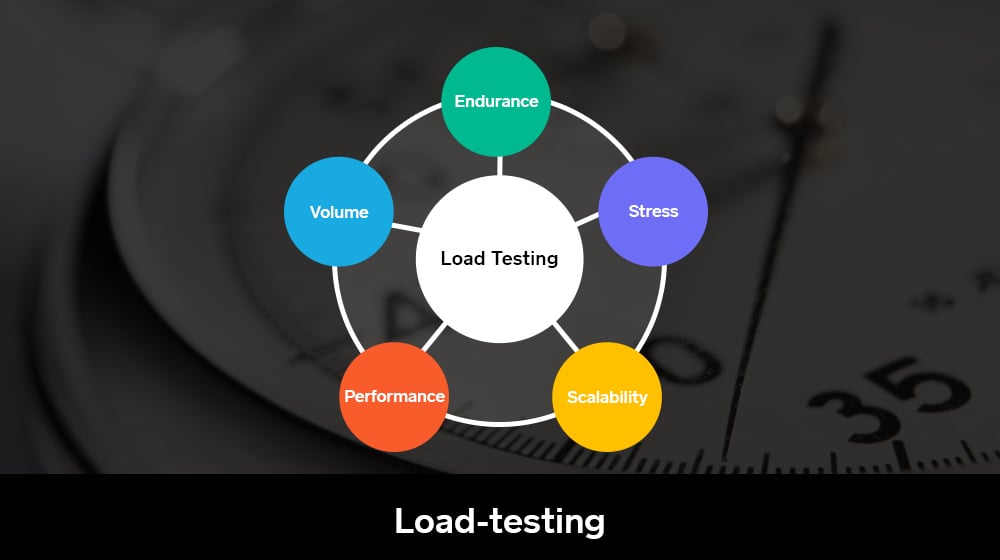In the dynamic landscape of software development, testing holds a paramount position. With numerous options available, selecting the right load testing tool can be daunting. This guide introduces load testing and highlights top tools to streamline your testing process and optimize software performance.
What is Load Testing
Load testing is a type of non-functional software testing which is conducted to understand the behavior of any application under a specific expected load. Both normal and peak conditions are simulated for the test. Load tests help in finding out the maximum operating capacity of an application. The primary goal of load testing is to determine the maximum amount of work a system can handle without breaking down.
Load Testing also helps in determining the bottlenecks in the processes and helps identify the elements that cause friction, delay, and breakdown. In load testing, the load is systematically increased to extreme conditions. The idea is to find out how much load the application can handle before it crashes. It also enables you to find out the point when you should consider reconfiguring the network and when to add a new server etc.
Top 5 Load Testing Tools for 2024-2025
Load testing is generally carried out by using automated Load Testing tools. Let’s discuss a few tools that can help you with load testing.
1. JMeter
2. Gatling
3. CloudTest
4. WebLOAD
5. The Grinder
1. JMeter
Apache JMeter is a popular cross-platform, pure Java open source desktop application designed to load test functional behavior and performance. All basic protocols such as JDBC, SOAP, LDAP, JMS, and FTP are supported by JMeter. This load testing tool was originally designed for testing Web Applications or FTP applications. Now it is used to test other functions like database server performance, load testing, distribution testing, and functional testing too.
Apache JMeter is used both on static and dynamic resources like databases, Queries, Perl Scripts, Servlets, FTP servers, and more. You don’t need to know much coding to do interesting things on JMeter as it runs via a friendly JMeter GUI.
It can thus do load testing and performance test various server/protocols including Http/Https, SOAP/RESTful, FTP, Mail, POSTs, Webservices, MongoDB, DB via JDBC, Native commands/shell scripts, and TCP. The advantage of JMeter as a load testing tool is that it is easily scalable.
If you want a higher load than what a single machine can create, you can go for JMeter’s distributed mode where one master JMeter machine controls a number of remote hosts and the load is multiplied. It has multiple built-in and external listeners that visualize and analyze performance test results and provide you with a variety of reports. It supports variable parameterization, assertions- response validations, per-thread cookies, and configuration variables. JMeter’s architecture is based on plug-ins. Offsite developers can extend JMeter with plug-ins.
Official Website:- Apache JMeter
2. Gatling
Gatling is an open-source, cross-platform load testing tool based on Scala, Akka, and Netty. It supports OSX, Linux, and Windows and has a developer-friendly DSL. It officially supports HTTP, WebSockets, server-sent events, and JMS. It is extensible through plug-ins, like the maven-plug-in, the Jenkins-plug-in, and the Gradle plugin. Gatling load testing tool fully supports HTTP(S) protocols and can be used for JDBC and JMS load testing.
It provides you with a scenario recorder that allows you to record your actions on the web applications you want to test. You can then export that recorded scenario as a Gatling scenario. Gatling uses both asynchronous concurrency and asynchronous IOs and hence it scales better.
Asynchronous concurrency with the Actor model allows the Gatling engine to be more efficient and it drastically reduces the number of threads needed to run a lot of users. For example, it can run 2000 users in 50 threads. Actors are composed of a mailbox that receives and stores all the messages and a computation unit that executes a predefined action for each message received. Multiple scenarios can be run in one simulation.
This load testing tool helps the testers save time and resources. Gatling has a basic GUI limited to a test recorder. The tests can be developed in easily readable/writable domain-specific language. It provides ready-to-present HTML reports.
Official Website:- Gatling
3. CloudTest
CloudTest is a scalable cloud-based testing service for load and performance tests. It was released by SOASTA in 2008. It is a single integrated platform designed for modern web and mobile applications testing. Its architecture is based on highly scalable and reliable infrastructure. Multiple load generators are spread across the world to simulate real-world usage scenarios.
Test applications that leverage CDNs can be tested properly. CloudTest enables rapid creation and editing of even the most complex tests you want to put your applications through. You can get thousands to millions of users generating traffic on your site or app.
The platform can be used as a virtual testing lab very cost-effectively. This load testing service has a sophisticated GUI and real-time analytics. Applications can be tested globally from 95 locations and CloudTest users can choose from 40 cloud service providers to simulate accurate user traffic.
Its grid deployment feature allows users to easily deploy servers at all the major cloud providers and be able to choose the number, size, and location of servers. The process is easy. Define testing needs and testing windows, create the environment with the required number of load generators and start testing.
CloudTest provides services like Test Cloud Management, Real-time Analytics, Global Test cloud, and Core Testing Services. CloudTest runs on Windows, Linux, and Mac OS.
Official Website:- CloudTest
4. WebLOAD
WebLOAD is a load testing tool by RADView. It can load test web systems as well as different enterprise systems like Oracle, SAP, and others. WebLOAD accurately simulates user’s behavior and simulates real-life demands on your Web application to predict capacity requirements, report bottlenecks and weak links in your application before deployment.
It has full client-side JavaScript support. It has JavaScript-based test scripting. WebLOAD’s IDE provides parameterization, response validation, messaging, correlation, native Java scripting, and Script debugging. You don’t need to spend too much time manually adjusting correlation parameters.
WebLOAD generates Virtual Clients that simulate real-world loads. Virtual Clients in load generating consoles are able to generate massive virtual user load – locally on Windows or Linux and on the cloud via AWS or other cloud providers.
Visual JavaScript-based test scripts or agendas define the behavior of Virtual Clients. WebLOAD executes these test scripts and gathers the response graphically and statistically and presents them in real-time. WebLOAD’s analytic dashboards provide more than 80 configurable report templates for root cause analysis. You can integrate WebLOAD with APM tools like AppDynamics, Dynatrace, New Relic, open-source software like Selenium, and Jenkins to incorporate load testing into a continuous delivery process, with PerfectoMobile for mobile testing and more.
Official Website:- WebLoad
5. The Grinder
The grinder is an open-source Java-based load testing tool that is distributed under a BSD style license. With the help of Grinder, you can test anything that has a Java API. It supports multiple protocols. You can test HTTP web servers, SOAP and REST services, and application servers like JMS, RMI, CORBA, and EJBs.
Tests in Grinder are run through dynamic scripts using load injector machines. Dynamic requests, Java, Jython, or Clojure code combined with any Java API, can be tested through scripts. It allows for arbitrary branching and looping. Test results are directly available to test scripts and depending on the outcome of each test different test paths can be taken. The default scripting language is Jython, the Java version of Python.
The advantage of Grinder as a load testing tool is that it is easily extendible. It provides for centralized script editing and distribution. Scripts can also be created by recording the actions of a real user using the TCP Proxy. The TCP proxy has pluggable filter architecture. Users can write their own filters.
The Grinder consists of a Console and Grinder Agents. The console which is a GUI application controls Grinder agents and monitors results in real-time. It can be used as a basic IDE (Interactive Development Environment) for editing and developing test suites. Worker processes can be started, stopped, and reset from one central console. Grinder Agents are the load generators.
Grinder console can monitor and control multiple load injectors. Grinder enables distributed testing which scales with the increase in the number of agent instances. It provides for flexible parameterization, which can help you create test data on the fly. You can also integrate external data sources like files and databases. Grinder provides mature HTTP support that automatically handles cookie and connection management for test contexts.
Official Website:- The Grinder
Key Takeaways on Load Testing Tools
These are some of the additional load testing tools you can use. You can experiment with tools like LOADrunner, Blazemeter, LoadUI, WAPT, Httperf, Tsung, Appvance, OpenSTA, NeoLoad, and other load testing tools too.
Load testing ensures that the application is able to handle expected and unexpected user loads. Simulation of user activity and monitoring of your infrastructure gives you plenty of insights on how to avoid bottlenecks.
Find out your specific requirements and then research, test, experiment, and monitor till you find the tool that fits your requirement.
In case of query, you can contact us and we would be happy to help you out in any of your software testing-related queries.









